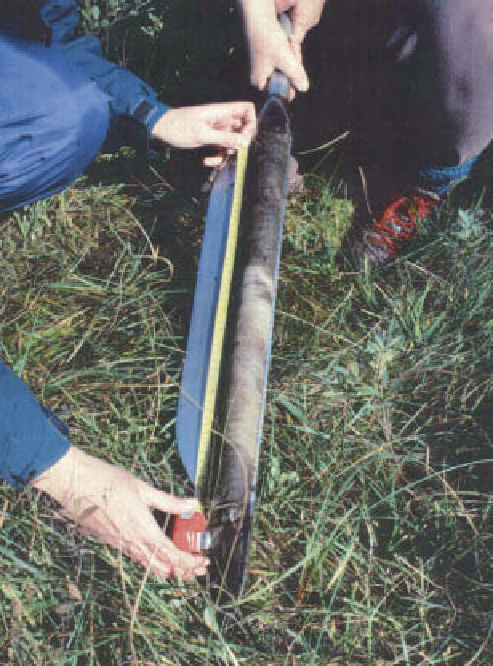Geoscience Reference
In-Depth Information
Plate 23.16
Peat core taken by a Russian peat corer. Well-
sediment.
Photo: M. A. Atherden
Plate 23.17
This red lichen (Caloplaca elegans) is one of
over 400 species on Axel Heiberg Island, Canadian High
Arctic. It grows outwards from a dying centre, and therefore
its diameter is proportional to its age.
Photo: Fritz Muller
Parts of Britain have been studied by Lamb (1972, 1977)
and Grove (1988). Again the North York Moors illustrate
how parallel research into palaeoecology and historical
documents highlights how far the documentary evidence
supports or denies evidence from palaeoecological
research. Reassuringly, the conclusion reached is that the
documentary records do appear to support the scientific
evidence, although there are discrepancies which may or
not be explainable (Menuge 1997; Chiverrell and Menuge
2003).
Table 23.3
lists a selection of the documents
relevant to the North York Moors, with comments on their
reliability. They include chronicles, ecclesiastical histories,
monastic cartularies, estate records, forest records, farm
manuals and diaries, school log books, tithe records, court
records, newspapers and meteorological records. They
were written for different purposes, and one has to be
careful not to exaggerate information, especially when it
was written several hundred years ago. Some are unreliable
as historical documents (e.g. Bede), and may have been
written with political or spiritual motives in mind.
Area-specific information is scarce until the Domesday
Book (1086). From the twelfth century to the early
sixteenth charters record landscape change and land use.
They often give useful indirect evidence, as for example
in the following extract from
The Anglo-Saxon Chronicle
(Laud E) referring to
AD
1115.











































